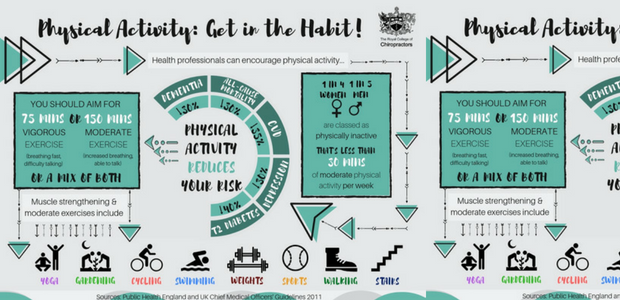The Impact Of Posture On Neck And Back Pain: Techniques For Sustaining Proper Alignment Throughout Daily Activities
The Impact Of Posture On Neck And Back Pain: Techniques For Sustaining Proper Alignment Throughout Daily Activities
Blog Article
https://www.ajc.com/entertainment/dining/hunting-for-boston-butt-the-holy-land/tcocH9Gr2HYyFDyBYu9mLO/ -Houghton Thaysen
Preserving appropriate posture isn't nearly staying up straight; it has to do with aligning your body in a way that sustains your back and reduces the risk of pain in the back. The way you sit, stand, and move throughout the day can dramatically affect your spine health. But how specifically can you make sure great alignment continually, even during active days full of different tasks? Allow's dig deeper right into the refined yet impactful modifications you can make to your everyday routine to maintain your back happy and healthy and balanced.
Importance of Proper Pose
Correct posture is essential in preserving a healthy back and avoiding discomfort. When you sit or stand with great position, your spinal column is in placement, minimizing strain on your muscles, ligaments, and joints. This positioning enables the body to disperse weight evenly, stopping excessive anxiety on specific locations that can bring about pain and discomfort. By keeping your spinal column appropriately aligned, you can additionally improve your breathing and digestion, as slouching can press organs and limit their functionality.
Additionally, keeping excellent pose can enhance your general look and self-confidence. When you stand tall with your shoulders back and head held high, you exude confidence and appear more approachable. Great stance can likewise make you feel much more invigorated and sharp, as it promotes appropriate blood circulation and allows your muscle mass to function effectively.
Integrating proper posture into your everyday routine, whether resting at a workdesk, strolling, or exercising, is necessary for stopping pain in the back and promoting overall wellness. Remember, a tiny adjustment in just how you hold on your own can make a considerable distinction in exactly how you really feel and work throughout the day.
Common Postural Mistakes
When it comes to keeping excellent pose, several people unknowingly make common blunders that can add to back pain and pain. Among one of the most prevalent errors is slouching or stooping over while resting or standing. https://remingtonavpjd.idblogz.com/32657971/interested-by-the-numerous-kinds-of-neck-and-back-pain-and-their-causes-decipher-the-secret-of-your-pain-in-the-back-for-long-lasting-relief on the back and can lead to muscle imbalances and discomfort over time.
Another typical mistake is overarching the lower back, which can squash the all-natural contour of the spinal column and cause pain. Additionally, crossing legs while resting might really feel comfortable, but it can create an imbalance in the hips and pelvis, causing postural problems.
Making your domain name of a cushion that's as well soft or too firm while resting can additionally influence your positioning and add to back pain. Lastly, regularly craning your neck to look at displays or adjusting your placement often can stress the neck and shoulders. Being mindful of these typical postural blunders can help you maintain better alignment and decrease the risk of pain in the back.
Tips for Correcting Alignment
To improve your positioning and reduce back pain, it's necessary to concentrate on making small modifications throughout your everyday regimen. Begin by being mindful of your pose. When sitting, guarantee your feet are level on the floor, your back is straight, and your shoulders are unwinded. Avoid slouching or leaning to one side. Use ergonomic chairs or cushions to support your lower back.
When standing, distribute your weight equally on both feet, keep your knees a little bent, and embed your pelvis. Engage your core muscular tissues to sustain your spine. Take breaks to stretch and walk around if you have an inactive task. Incorporate workouts that reinforce your core and back muscles, such as planks or bridges.
While sleeping, use a cushion that sustains the all-natural contour of your neck to keep appropriate spinal alignment. Avoid sleeping on your belly, as it can strain your neck and back. By being mindful of these pointers and making small adjustments, you can gradually remedy your placement and relieve neck and back pain.
Conclusion
Bear in mind, preserving great pose is crucial to avoid back pain and promoting spinal wellness. By bearing in mind your positioning, dispersing weight uniformly, and engaging your core muscular tissues, you can decrease stress on your back and minimize the threat of discomfort and injury. Include ergonomic assistance, take routine breaks to extend, and reinforce your core and back muscle mass to keep proper positioning throughout the day. Your back will certainly thanks for it!
